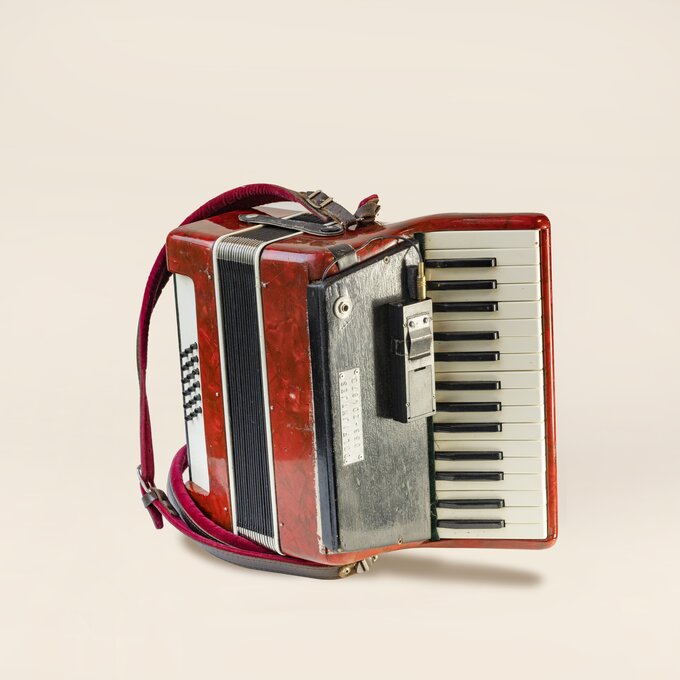Hof der dingen - The accordion of Wim Opbrouck

This accordion was a gift from Wim Opbrouck - our curator. “I’m donating my very first accordion to the exhibit ‘Objects of West-Flemish Wonder’. It may smell a little and is slightly in shreds, but it has travelled all over the world. Thousands of people have sung along to the tunes of this accordion -in perfect West-Flemish, I might add- at Dranouter Festival, back when I was touring with my band ‘De Dolfijntjes’. Even though the label states ‘Made in Taiwan’ – it’s full of West Flemish soul and heart – and that is what really matters.”
A humble instrument with a powerful voice
The accordion – also called a squeezebox or le piano des pauvres was first introduced to the musical scene around 1830, making it a relatively young instrument in music history. In 1880, Felix Callewaert established the very first accordion shop in Zwevezele – marking the start of the Flemish accordion tradition. Felix passed the craft on to his son Eugène, who joined the atelier and took over the business after his father’s death.
At its peak, the company employed six people who made six to seven instruments per week. Initially, they solely assembled accordions using the necessary German parts. Later, they started manufacturing the necessary parts themselves on-site.
Their signature model, the Lichtervelde, became a household name and was sought after by not only Flemish musicians but also accordion players in Detroit and elsewhere in Canada and the United States. The Callewaerts produced instruments in all price ranges – from affordable models for amateur players to deluxe versions for professional performers.
From the sea to the stage
Sailors and fishermen became quite fond of the instrument due to both its robust look and its pitch stability, leading to a rise in popularity amongst these groups. And to this very day, this quirky instrument continues to inspire musicians young and old — keeping its joyful tunes alive in the West Flemish music scene.
Have you ever heard the West Flemish Accordion Orchestra play, for example? Or had the pleasure of enjoying a performance by Marino Punk – a passionate West Flemish accordion player that is easily recognised by his colourful mohawk?